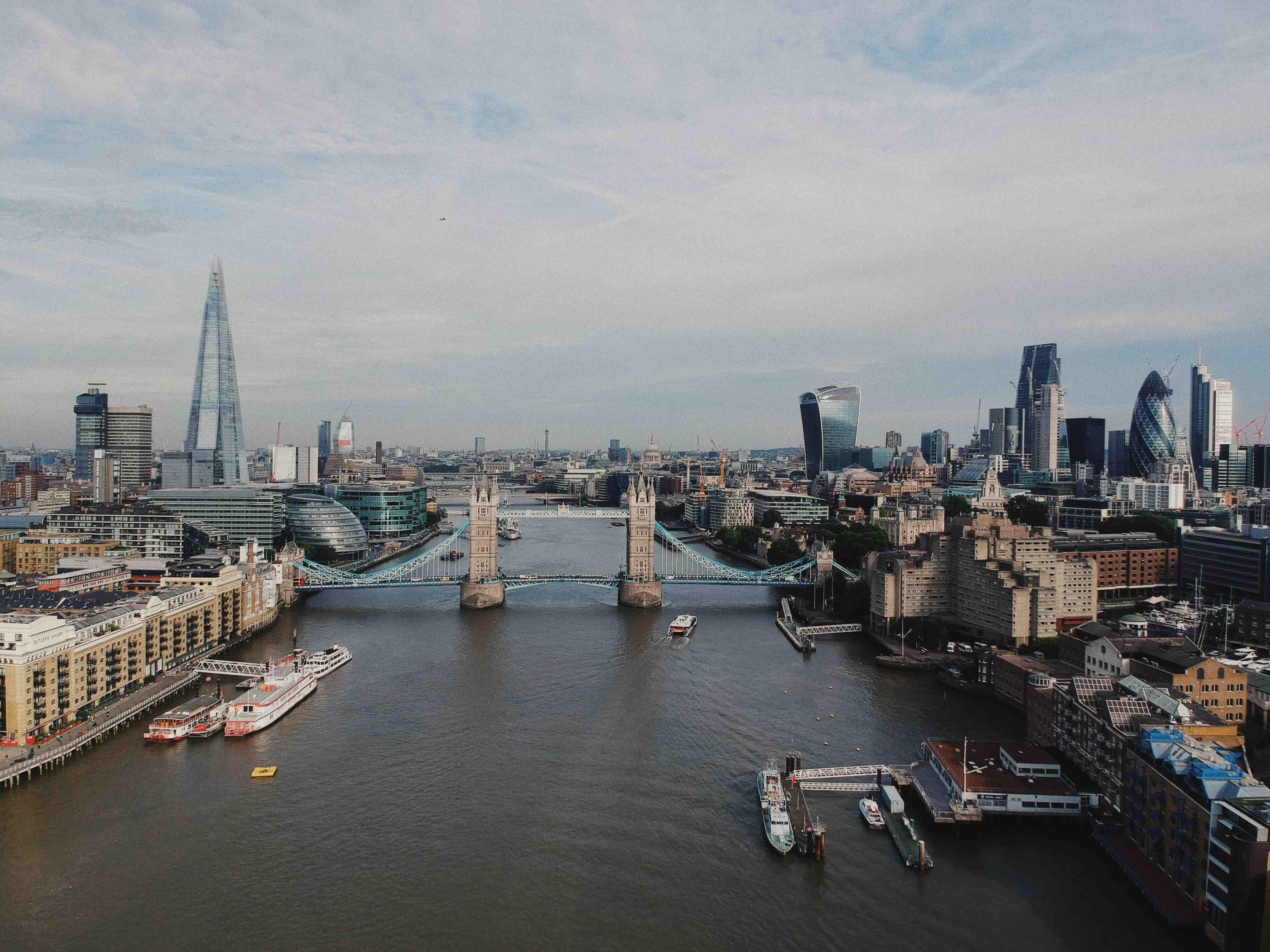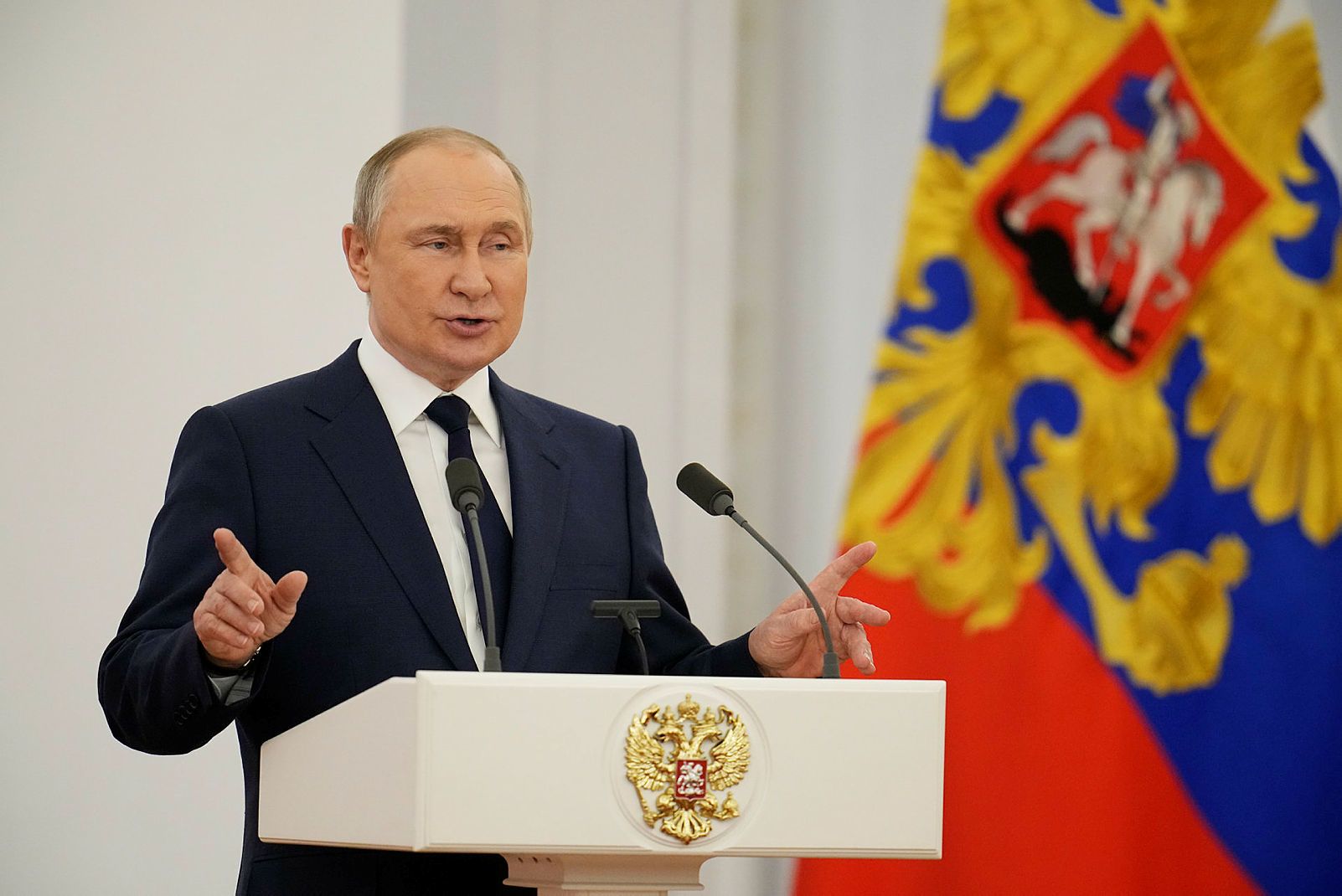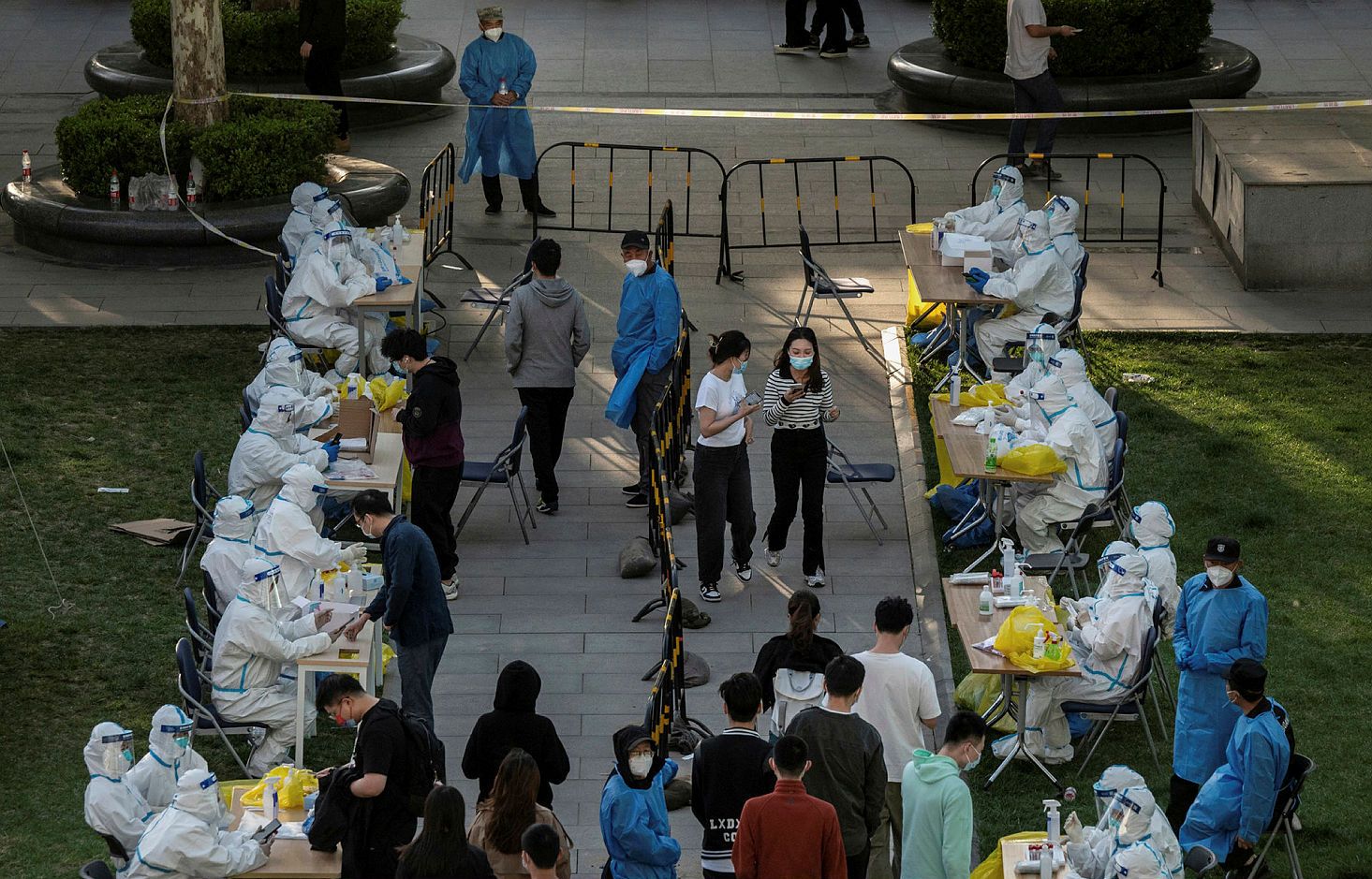Emerging markets investing in a new world order
Developing economies present a mixed bag of opportunities for investors


Russia is a small contributor to the emerging markets index, but what its actions in Ukraine highlight is the threat of crisis from countries, whose markets can come with great volatility even in times of relative geopolitical stability.
Additionally, volatility in China's economy – a big player on the index at 32 per cent, and whose zero-Covid policy is contributing to a slowdown in growth – would have a big effect on emerging markets.
The government is targeting growth of 5.5 per cent in 2022, its lowest in 30 years.
But despite all this, it is not the same story for every emerging market economy.
For example, the rise in oil price and other commodities has helped boost the share prices of energy, commodity and Latin American investment funds.
This report, which will look at the state of emerging markets and opportunities for investors, comes with 30 minutes of CPD.
Emerging markets remain popular despite uncertainties
A majority of advisers intend to retain their investments in emerging markets despite uncertainties brought about by ongoing geopolitical turmoil, namely the invasion of Ukraine by Russia, according to the latest FTAdviser poll.
The poll found that 64 per cent of respondents are extremely unlikely to move away from emerging markets, while 19 percent said it was somewhat unlikely.
The poll has come at a time when emerging markets are already being hit by a global slowdown and rising inflation.
Additionally, any growth in emerging markets is being dragged down by China, which has been persisting with its zero-Covid policy.
Tim Morris, an independent financial adviser at Russell & Co, says: "I took part in the poll and was in the majority. Emerging markets has been badly impacted by Russia. Most funds have now sold their Russian holdings.
"As per usual, the sell-off will present opportunities for investors. While it’s unlikely to be a quick win, to paraphrase Warren Buffett, ‘be greedy when others are fearful’.
"Partly because many of their economies are commodity driven, emerging market equities have performed well in a high-inflation environment. And they are generally further along with monetary tightening than western economies."
ima.jacksonobot@ft.com

Amid uncertainty where should investors seeking emerging markets exposure look?
Describing emerging market investing as risky is sometimes a truism and sometimes a gross understatement, and in recent weeks it has certainly felt like the latter.
Since Russia invaded Ukraine on February 23 we have seen the country’s stock market crash, the currency tumble and wrangling over the prospect of the nation defaulting on its debt.
Substantial economic sanctions spell trouble ahead for the Russian population and look discouraging for those looking to invest in the country.
Whether for ethical or financial reasons, it may come as a relief that investors’ connections to Russia appear, in many cases, to have been minimal in the first place, and to have rapidly diminished more recently.
Take the suspension of trading in funds like Liontrust Russia, the decision of broader portfolios like the Fidelity Emerging Markets investment trust to sell down Russian exposure where available, and the ejection of the country’s shares from MSCI’s emerging markets universe.
With the Moscow Stock Exchange having partially reopened after a month-long suspension, funds with remaining Russian exposure will likely be looking to exit if they have not already done so.
Substantial economic sanctions spell trouble ahead for the Russian population
Many forms of indirect exposure are also disappearing, as with BP’s decision to call time on its 19.75 per cent shareholding in Rosneft.
Having only made up around 3 per cent of the MSCI Emerging Markets index at the end of January and tending not to feature significantly in most emerging market and Europe funds even before the invasion, Russia seems unlikely to make up more than a negligible portfolio allocation for most clients.
What is more important about recent developments is that they bring home the constant threat of crisis that comes with the region and in particular with individual countries, whose markets can come with great volatility even in times of relative geopolitical stability.
As our chart shows, the MSCI Russia index has richly rewarded investors fairly recently, enjoying a 20.1 per cent sterling total return in 2021 as oil and commodities rose.
Likewise, it enjoyed a gain of some 45 per cent in 2019.
If Russian shares have been extremely volatile at points, it is fair to say that a broader approach to emerging market investing has come with its own frustrations, often failing to live up to expectations, that factors such as strong demographics would fuel outstanding stock market returns.
The MSCI Emerging Markets index has notched up a sterling total return of some 70 per cent in the decade to April 5 2022, putting it behind a 103.7 per cent return from the troubled FTSE All Share and 243.9 per cent from the MSCI World benchmark.
The MSCI AC Asia ex Japan index, which has similarities with the emerging markets index but lacks exposure to areas such as Europe and Latin America, is also ahead with a return of nearly 115 per cent.
As our chart shows, the MSCI Emerging Markets index has a patchy record versus the US-heavy MSCI World benchmark, though it has stood out in a few calendar years.
This does not mean that investors should write-off emerging markets.
They can still form part of a diversified portfolio, even if intermediaries may wish to limit such exposure, or see it as best suited to clients with a higher tolerance for risk.
But investors should note the big exposures they tend to be taking with 'generalist' emerging market portfolios, as well as the risks and rewards involved if they take a more targeted approach.
The dragon in the room
Investors have already had a rude awakening about the problems that can befall emerging market and Asian portfolios, in the form of a Chinese regulatory crackdown that gathered momentum last year.
The Chinese Communist Party’s latest five-year plan focuses on improvements in areas such as national security, financial stability and social stability, and this led to enforcement across multiple sectors in 2021.
Chinese businesses with a primary stock market listing in a foreign country (such as the US) were subject to greater scrutiny because of national security concerns, while the authorities looked to tackle inequality in certain key sectors as part of its social stability remit.
Measures included a cybersecurity review into ride-hailing business Didi just days after its 2021 stock market IPO, an unexpected crackdown on private tutoring that hurt names like Tal Education, and a variety of measures that have proved painful for emerging market investor favourites Tencent, Alibaba, Baidu and food delivery name Meituan.
It is the exposure to China that emerging market investors should arguably be more focused on
This caused a major share price slide in China, something that has not really abated so far this year.
If the Russian market has suffered a devastating blow, it is the exposure to China that emerging market investors should arguably be more focused on.
As the next chart shows, MSCI’s Emerging Markets and AC Asia ex Japan indices were both heavily exposed to China, with Taiwan, India and South Korea also making up big weightings.
This matters for two reasons. Firstly, mainstream emerging market and Asia trackers will focus on these indices, leaving portfolios more exposed to China and a few other countries than anything else.
Secondly, active managers tend to pay close attention to these indices and, like US equity fund managers, will tend to have big exposures to a few stocks that make up a big part of the market.
To give one example, Taiwan Semiconductor Manufacturing Company made up 7 per cent of the MSCI Emerging Market at the end of March, while Tencent and Samsung each made up some 3.75 per cent.
Returns are therefore heavily influenced by one market, and by a handful of stocks that appear prominently in indices and many funds.
It is worth noting that certain funds, such as the Fundsmith Emerging Equities Trust and Stewart Investors Asia Pacific Leaders Sustainability, have tended to have very low weightings to China, while some active funds have pivoted from China to India in the last year or so.
When it comes to passive options, we have seen a few emerging markets ex-China trackers launch in recent years.
To give an idea of how such portfolios shape up, Lyxor’s MSCI Emerging Markets ex-China ETF recently had 22.53 per cent of its assets in Taiwan, with 19.11 per cent in India, 17.78 per cent in South Korea, 8.59 per cent in Brazil and 6 per cent in Saudi Arabia.
For some, however, China remains a big part of investing in the region. Tom Sparke, investment manager at GDIM, has recently scaled back Asian exposure from an overweight position, but adds: “I still think an allocation to China is essential in most portfolios”.
He says: “I do not have many concerns over the near term as I think the state’s [regulatory] intervention will be limited, though the lockdown situation will inevitably cause problems. The push toward higher growth, loosening of policy and the desire to keep the nation happy and secure ahead of the national party congress should ensure stability for now.”
Meera Hearnden, investment director at Parmenion, also points to concerns about lockdowns but says: “Where I see some signs of reassurance is that its vaccination rates have picked up, which will help with future lockdowns.”
She also notes that the flow of new credit being issued in China – something she sees as an indicator of economic growth – has seen a “small uptick” lately, adding that the government may step in with more stimulus.
“I would see the current opportunity as positive rather than negative in this instance, and I’d expect our fund managers to take advantage of these opportunities,” she adds.
Getting granular
Investors with a good appetite for risk may well be tempted to take more granular exposures to emerging markets and even focus on promising, but potentially riskier, frontier markets. A variety of options are available here, from regional funds to vehicles that restrict their investment universe to a single country.
For one, Latin American funds are back in the limelight thanks to a run of strong performance. The average fund in the Investment Association’s Latin America sector made a sterling total return of 14.5 per cent in March, putting the sector ahead of all others for the month. With Brazil and Latin America benefiting strongly from commodity price gains, it is an area turning heads for investors worried about inflation.
Latin America tends not to make up a huge allocation in many emerging market funds, and certain promising markets will not appear at all due to their classification as frontier markets.
Take Vietnam, which has been viewed as a beneficiary of the tensions between China and US in recent years and a provider of cheap goods. Three investment trusts focused on the country, Vietnam Enterprise Investments, Vietnam Holding and VinaCapital Vietnam Opportunity, have all delivered extremely strong gains in recent years.
Latin American funds are back in the limelight thanks to a run of strong performance
Turning to a different market, the Weiss Korea Opportunity trust has had a difficult 12 months but does come with a stronger medium-term performance track record.
Perhaps unsurprisingly, big players in the emerging markets index are also the focus of some single-country funds. In the investment trust space UK investors have access to four dedicated India funds, with the same number of China-focused portfolios also available.
Investors wishing to either focus even more closely on the likes of China or hoping to get around the lopsided nature of the emerging markets index might be intrigued by such offerings.
But as ever, risk management is important here.
The China trusts have amply demonstrated that single-country funds can prove volatile, by delivering big gains in 2020 and then struggling in both 2021 and 2022 so far. What might seem like an opportunity to 'buy the dip' may not always prove the case.
It is notable, for example, in the passive space that European investors piled into the KraneShares CSI China Internet ETF in 2021, according to Morningstar data, presumably in the hope that a portfolio heavily exposed to Chinese tech giants would recover soon. The fund endured a paper loss of 16.6 per cent in the first quarter of 2022 as a variety of issues, from coronavirus restrictions to Ukraine tensions, prompted a fresh sell-off in the Chinese market.
Good performance is not a reason to forget geopolitical problems, or other challenges
Conversely, good performance is not a reason to forget geopolitical problems, or other challenges. GDIM's Sparke notes: “Russia and Ukraine are clearly areas of concern but Brazil, despite the recent boon from being a resources exporter, suffered badly in the Covid crisis under Bolsonaro and I would be very wary allocating there as a result.”
Investors should ultimately remember that the emerging markets are particularly prone to idiosyncratic risks, and this can have a severe effect on individual markets that may then reverberate out to broader portfolios – especially in the case of big names such as China and India.
Such crises are certainly not uncommon: note, for example, that Turkey had been struggling with rampant inflation over recent months, even before big price rises became more of a global issue. Problems have seemingly been exacerbated by Turkish leader Recep Tayyip Erdogan rejecting the economic consensus that interest rates should rise as a way to cool economic activity and rein in inflation.
Investors may therefore wish to diversify as well as they can, and not get too carried away with especially niche positions.
Describing emerging markets as risky may still be an understatement rather than just a truism.
david.baxter@ft.com

Russian President, Vladimir Putin. (Source: Fotoware)
Russian President, Vladimir Putin. (Source: Fotoware)

China has been persisting with its zero-Covid policy. (Source: Fotoware)
China has been persisting with its zero-Covid policy. (Source: Fotoware)

Brazil and Latin America have benefitted strongly from commodity price gains. (Source: Unsplash)
Brazil and Latin America have benefitted strongly from commodity price gains. (Source: Unsplash)
Why the chorus predicting an emerging markets crisis is out of tune
The International Monetary Fund’s latest forecast update sees it join the chorus of institutions and analysts warning that tighter global financial conditions could trigger a crisis in emerging markets.
The warnings come as the US Federal Reserve and other central banks front-load interest rate hikes in a bid to tackle inflation.
These concerns are justified to some degree.
After all, Fed tightening was a pre-cursor to sovereign debt crises in Latin America in the 1980s, Asia in the 1990s and Central Eastern Europe in the 2000s. And there have been other examples of events such as the Russian rouble crisis in 1998 that have sent ripples around other emerging markets.
Why Russia looks set to default
It is almost inevitable that Russia will default on its sovereign debt.
Earlier in April, the US barred Russia from using frozen central bank reserves, held with US banks, to pay bondholders.
Meanwhile, the US Treasury blocked US correspondent banks from managing dollar payments from Russia; a move that forced Russia to pay holders of dollar-denominated government debt in roubles.
Payment in an alternate currency is likely to be viewed as a default, albeit not until a 30-day grace period has elapsed.
However, a default by Russia will be due to political decisions rather than the kind of gaping economic imbalances that typically sow the seeds of crisis. Indeed, until the invasion of Ukraine, Russia had an extremely strong external position.
For example, its short-term external debt (that is all debt, public and private, denominated in both foreign and local currency owed to foreign investors in the next 12 months) accounted for only 10 per cent of the now frozen foreign exchange reserves.
And those reserves were enough to pay all of Russia’s external debt, making the risk of a more conventional default extremely low.
Could other emerging markets be set to default?
As global financial conditions tighten, there are some countries that will get into trouble.
For example, Sri Lanka’s short-term external debt is almost twice the size of its foreign exchange reserves, while there are clearly liquidity concerns in Tunisia, among others.
These markets also face the challenge of soaring food and energy import bills, which have been the spark for bouts of social unrest in the past such as the Arab Spring in the early 2010s.
Sadly, this toxic combination will hurt on the ground.
From an investment perspective though, these are small frontier markets that account for a tiny fraction of benchmark global emerging markets bond indices.
And bonds already price in a decent probability of default.
On the whole, the major emerging markets have solid external positions, buttressed by proactive rate hikes from local central banks.
These provide a cushion as global interest rates rise and higher commodity prices raise import bills.
There are exceptions, such as Turkey where policy has become increasingly unorthodox in recent years. But even in Turkey the threat of sovereign default is low.
Is an opportunity emerging?
It would be brave to jump into emerging markets with both feet at a time when the Fed continues to ramp-up its hawkish rhetoric, and when rising commodity prices will add to already high inflation.
But all of this suggests that opportunities in emerging markets should begin to emerge in the months ahead.
Whereas central banks in developed markets are only just starting to tighten policy, their emerging market counterparts have been hiking interest rates for a year or so and are therefore not as far behind the curve.
Emerging market rates may need to rise a bit further if commodity prices push inflation higher, particularly food, which according to the UN Food and Agriculture Organization index climbed 10 per cent in March and has a relatively high share in CPI baskets relative to developed markets.
It is hard to know how commodity prices will evolve from here, and there is a not insignificant risk of further increases. But barring sustained, large rises inflation should start to ease in the coming months.
Once evidence emerges that emerging markets inflation has peaked, then the mood music among rate-setters is likely to change as the attention shifts back to anaemic rates of economic growth.
The large rate hikes already in place in many emerging markets will increasingly weigh on growth in the months ahead.
And, unlike developed markets, few emerging markets had the space to deliver large fiscal stimulus packages during the pandemic, and relatively poor Covid outcomes mean there is a greater risk that scarring will drag down already weak rates of potential growth.
All of that is likely to leave rates looking attractive relative to their fundamentals.
David Rees is senior emerging markets economist at Schroders


